Teaching students how to write a paragraph is not an easy task! Especially since many children struggle to put their thoughts down on paper. Let’s just face it… not all children are born writers! That’s exactly why when teaching paragraph writing, I feel it’s best to break the writing process into easy to follow steps. Let’s dive right into how to teach paragraph writing …
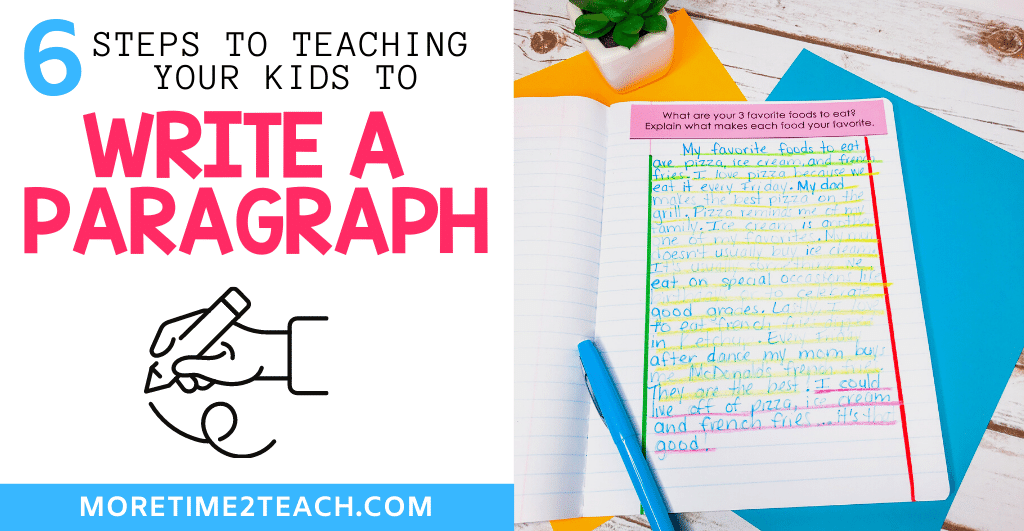
6 Steps to Teach paragraph writing
1. Understand the Prompt
Before students can start writing a paragraph, they need to understand the prompt. They need to identify the topic they’re going to write about and the purpose for writing.
I always begin by teaching my students to read the prompt more than once. The first time is to get the gist of the topic and the second time is to underline important words. This helps them develop a topic sentence and focuses their writing. When we’re first starting out, I also ask them to tell me what the prompt means using their own words.
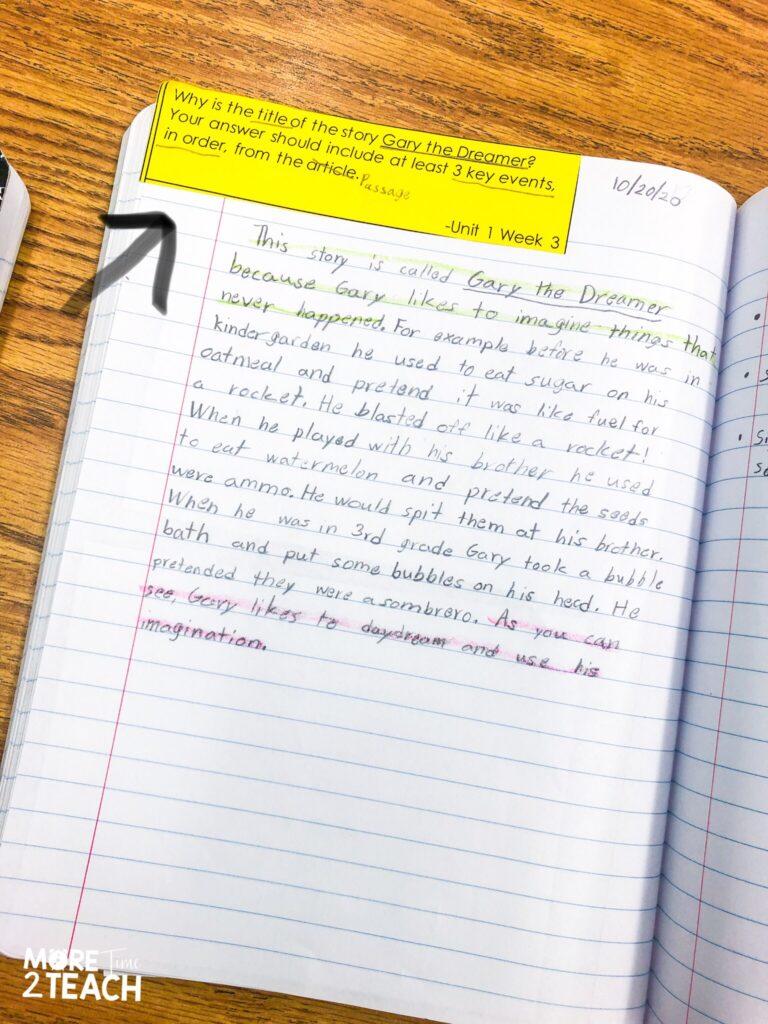
I know this sounds easy, but many kiddos struggle with this. Especially those that struggle with reading comprehension. Without a clear understanding of the prompt, students end up writing off-topic or worst, write a summary of everything that happened in the text 😢
2. Indent and Watch Your Margins
The next step in paragraph writing seems pretty straightforward. Teach your children that indenting means to move the first line of a paragraph over a finger space. It is used to signal the start of a new paragraph. It’s important to show your kiddos examples of proper and improper indentation so that you don’t end up with an indented paragraph like this…
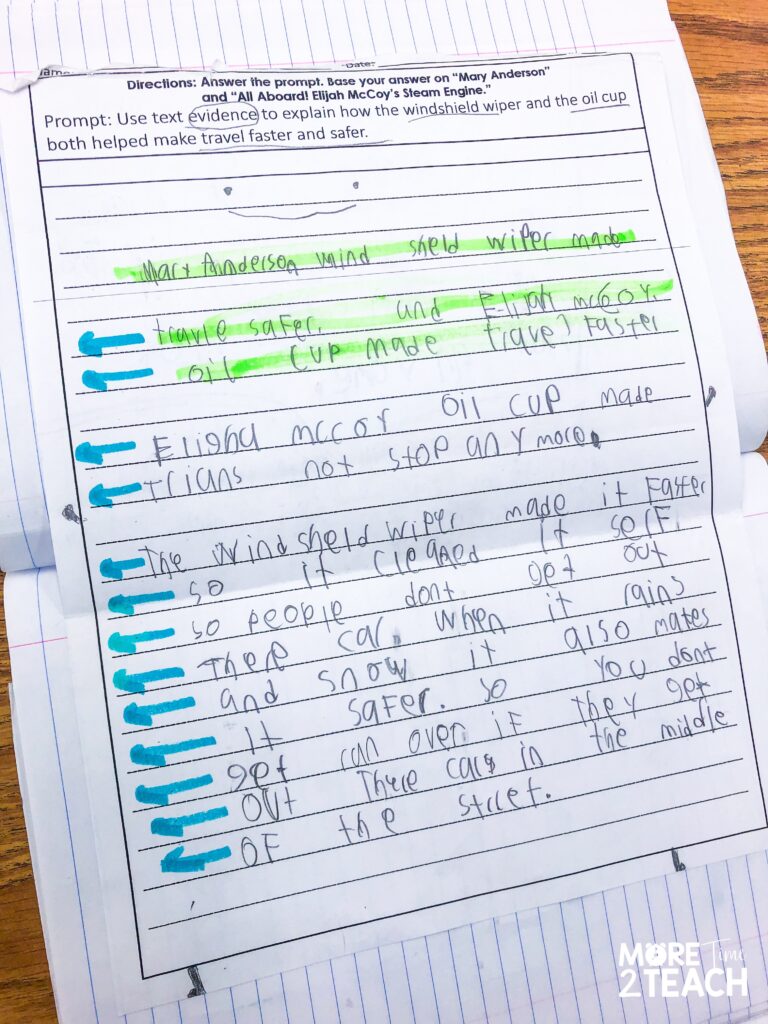
Don’t forget to teach about margins. I like to refer to them as the starting and stopping lines. For those students that continue to ignore the margins when writing a paragraph, I take a green and red marker and trace over the margins. The green line is where their words need to start and they cannot go beyond the red (stopping) line.
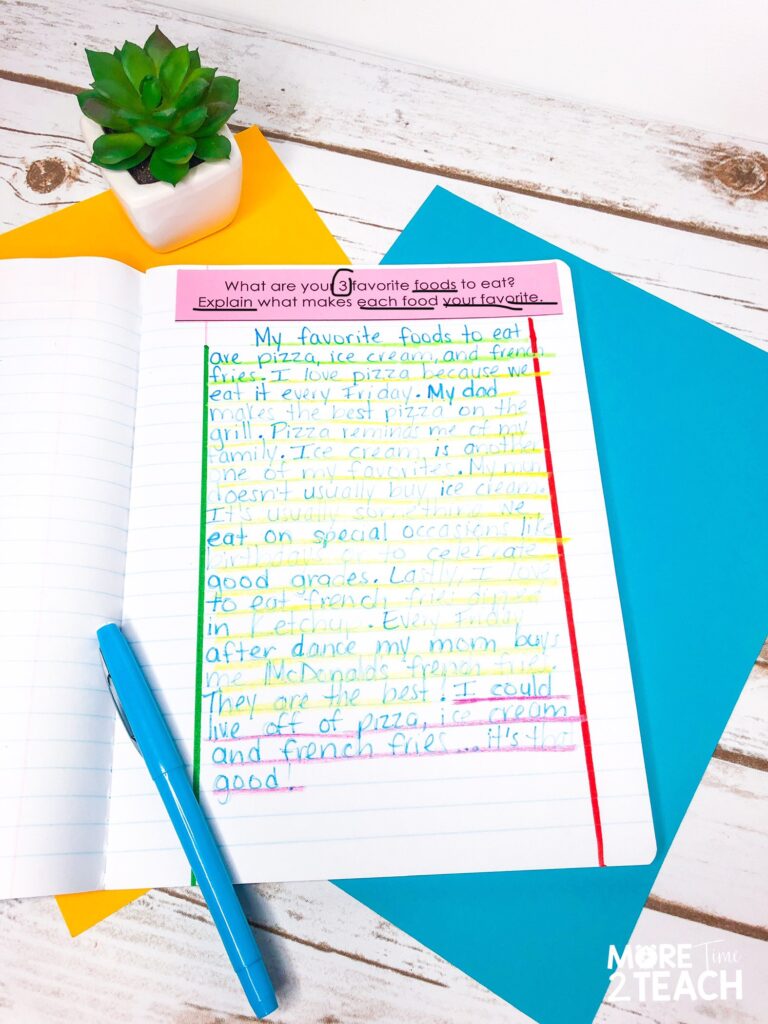
3. Topic Sentence or Introduction
Now that students understand the basic setup of their paper, it’s time to get writing. The topic sentence identifies the main idea of the paragraph. It is also the most important sentence in paragraph writing. The topic sentence tells the reader what the paragraph is about.
Spend some time focusing on how to write a well-written topic sentence that answers the prompt. If students don’t start off addressing the prompt in their topic sentence, chances are that the rest of their paragraph will be off-topic. I like to spend a week simply focusing on topic sentences and 4 types of topic sentences.
We start off by writing topic sentences together as a group and progress to students writing their own topic sentences. Sharing is also very important. Students need to hear examples from their peers. I even give my students the opportunity to edit their writing while their classmates share. Especially when we’re first starting out! This builds their confidence and helps them feel more comfortable with sharing.
4. Supporting Details
Supporting details include information that backs up or supports the main idea. I like to think of it as a pair of legs that hold up a table, or the main idea. Without strong supporting details, students’ topic sentences (main idea) will not hold up. This main idea and details activity is a perfect visual and reminder for the kiddos.


This is also the perfect time to have a little mini-lesson on the the 4 types of sentences and the difference between a sentence and a fragment.
5. Closing or Conclusion
A closing sentence, or conclusion, sums up the paragraph and restates the main idea using different words. It usually pushes the reader to take action, gets the reader to think about something, or tries to convince the reader.
I like to tell my students that when writing a paragraph, the closing sentence usually tells the reader the ONE thing you really want them to take away from the entire paragraph.
6. Reread and Check Punctuation
Step #6 is the step that most students skip. It’s also pretty important! Unfortunately, once our kiddos finish writing they tend to put their pencils down, close their notebooks, and call it a day. But chances are their writing has some fragments, is missing punctuation or all the sentences look alike and their paragraph writing is in need of sentence variety.
I tell my students that when they finish writing, the last step is to go back and reread. They need to read their paragraph writing aloud to themselves. This helps them hear their mistakes. I also have them color code the text. The topic sentence gets colored green, the supporting details yellow, and the closing sentence red. The kids actually enjoy this step of the paragraph writing process!
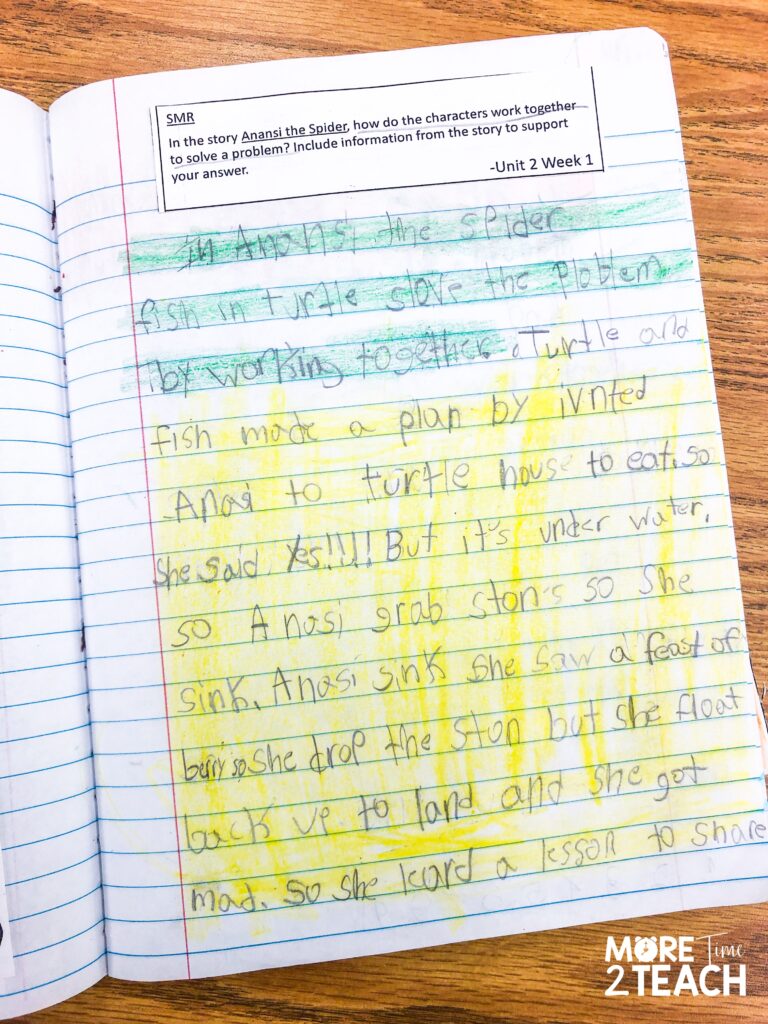
The best part about this color-coding system is that we even transfer it to our reading lessons. I love to give my kiddos passages and have them locate the topic sentence (green), details (yellow), and closing (red)!
Helpful Resources
Breaking paragraph writing into mini-lessons allows you to focus on one part of the writing process at a time. I usually break my paragraph writing unit into 10 writing workshop lessons. If you’d like some help with writing a paragraph and setting up your writing mini-lessons you can check out this paragraph writing unit.
While my students write, I like to play calming music in the background. It’s something they really enjoy and makes writing time more relaxing! I’ve also noticed that it helps calm some of the writing jitters! Feel free to add it to your Spotify playlists.
… and if you’d like to use this main idea/ details activity I shared above, you can download it for free here.
(If you liked these tips, feel free to use this image to save this post to your Pinterest board.)
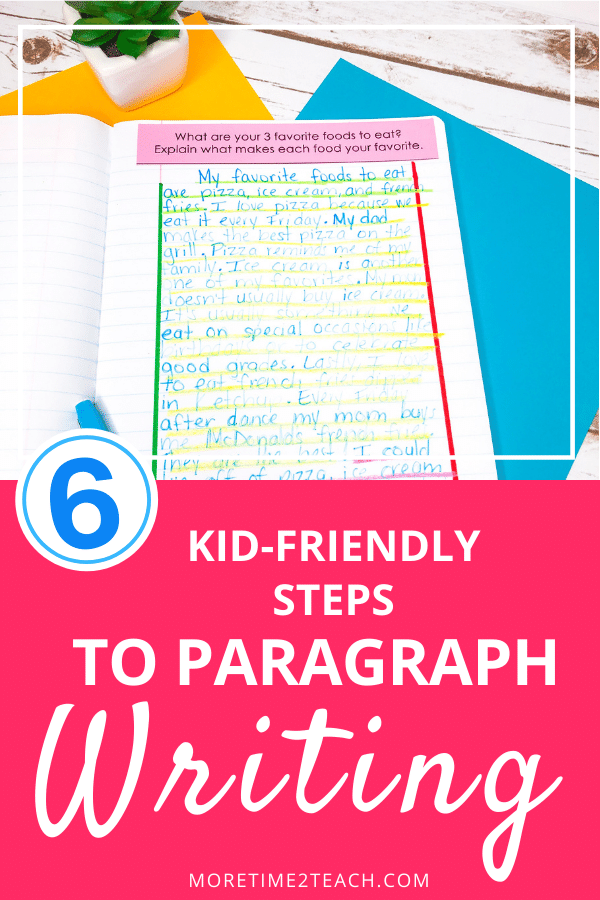

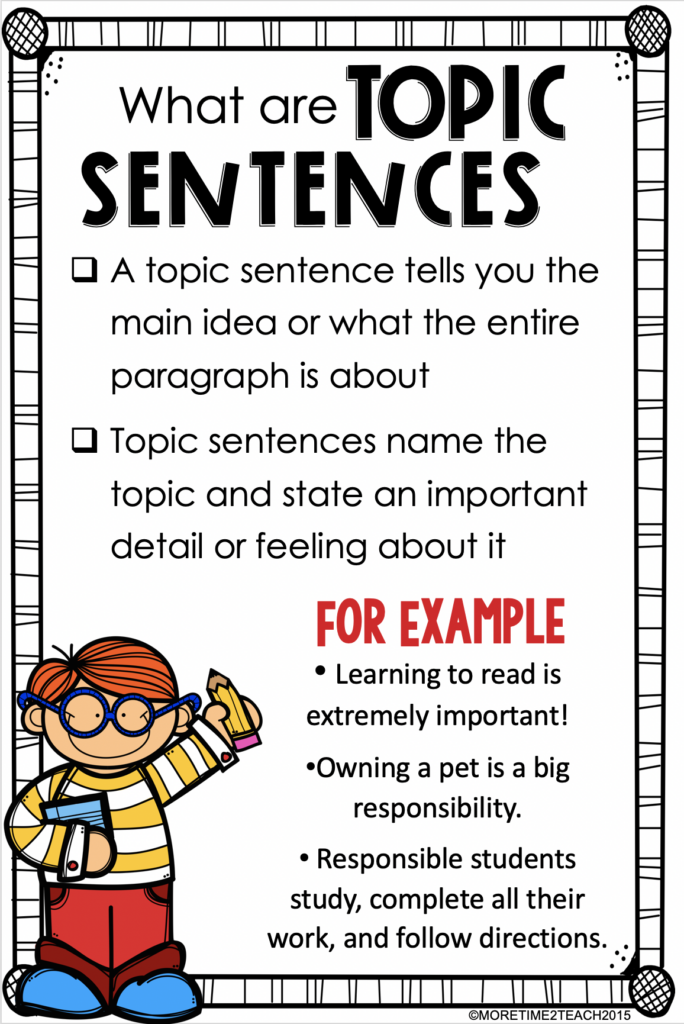
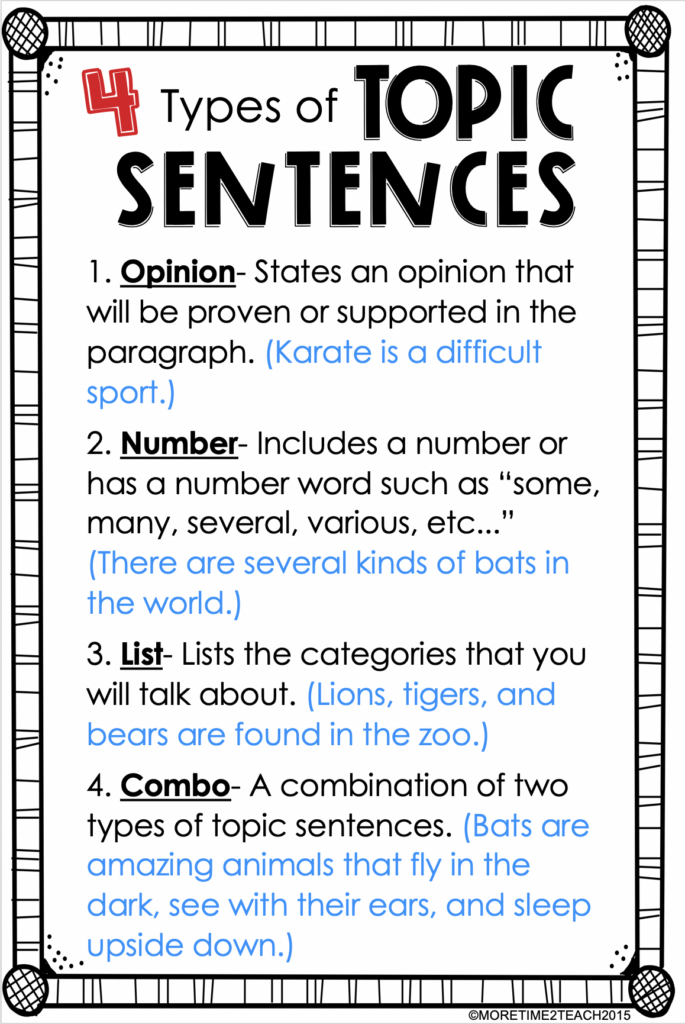
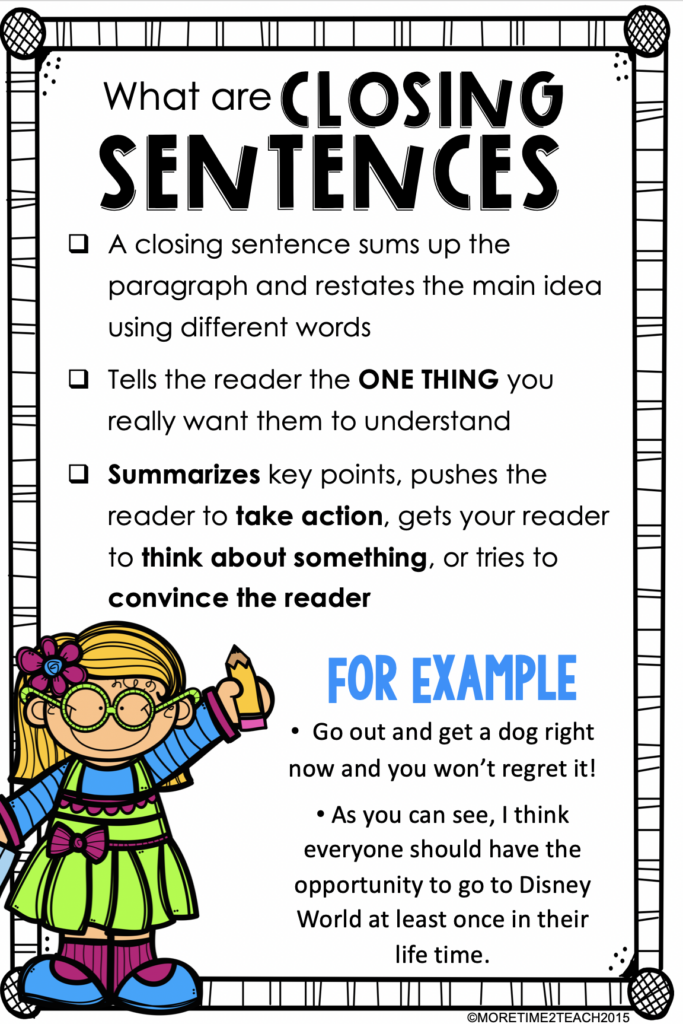
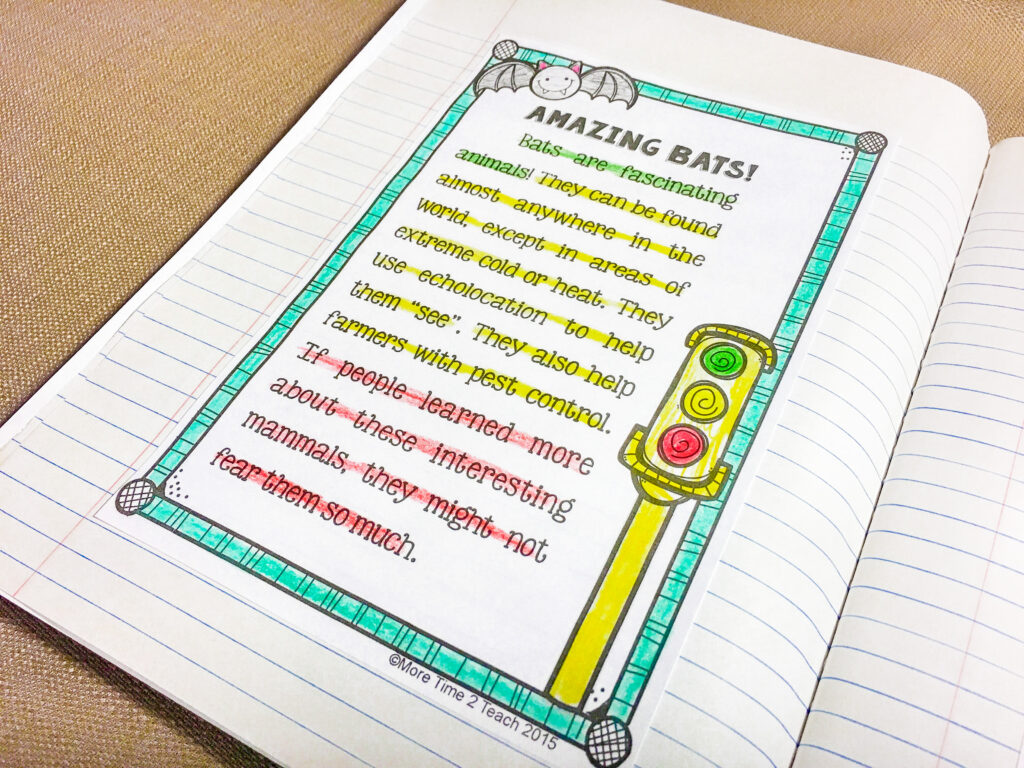
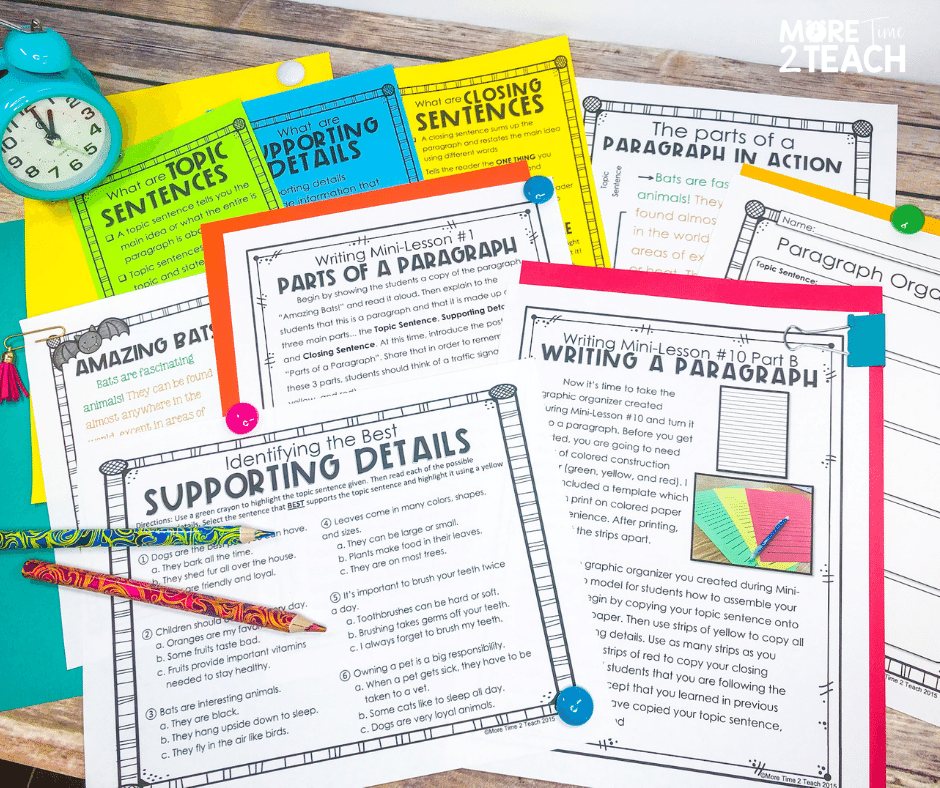
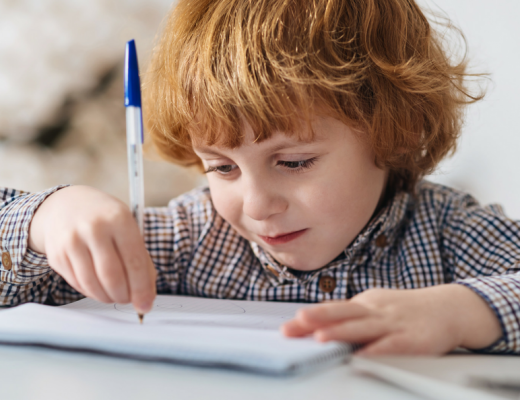
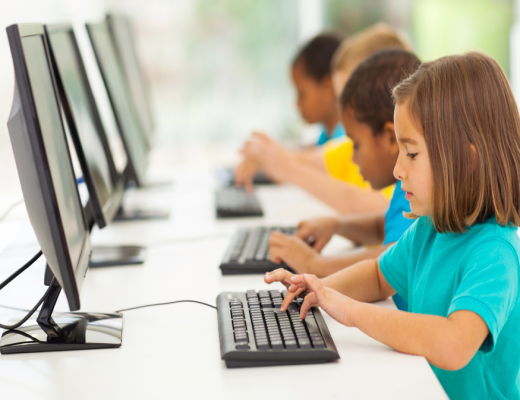

No Comments